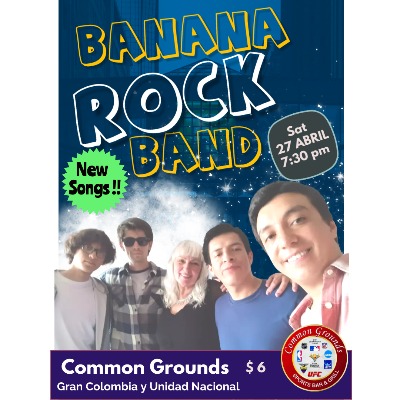BOOKSCuenca suburb of Challuabamba is an artifacts treasure trove of ancient Andean civilizations
Most Cuencanos know Challuabamba only as the growing upscale suburb on the lower, eastern side of the city. For more than 100 years, however, the area has also been known as one of South America´s richest archaeological sites. Excavations by archaeology pioneer Max Uhle almost 90 years ago produced an impressive collection of ceramics, statuary and other artifacts of cultures dating back 4,000 to 5,000 years ago.
The following is an excerpt from, Art and Archaeology of Challuabamba, Ecuador, by Terence Grieder (Univ. of Texas Press, Jan. 2009), chronicling excavations conducted in the 1990s. For ordering information, go to www.utexas.edu/utpress/.
Chapter 1. Introduction to the Project
Today Challuabamba (chī-wa-bamba) is a developing suburb of Cuenca, the principal city in the southern highlands of Ecuador. The old farmsteads that once composed the village are being replaced by large suburban houses, and even the Pan-American Highway along the north  bank is being superseded by a new four-lane divided highway on the south bank. The bridge over the Tomebamba River, just seven kilometers downstream from the site of our excavations, is a vital link in a wide network of roads leading north to Riobamba and Quito, west to the coastal plain and Guayaquil, and south to Cuenca and beyond to Peru or eastward to the Amazon basin. This is not an invention of modern transportation systems but follows what must have been ancient trails along an array of rivers and streams that join to drive a gorge through the eastern foothills of the Andes on their way to the Amazon. Challuabamba sits near the junction of these ancient trails.Challuabamba has been known as an archaeological site for nearly a century since Max Uhle's work there in the 1920s. In an interview in 1962 with a Quito newspaper the archaeologist Edward Lanning described the site in these words: "From a professional point of view, Challuabamba is the most fantastic site in the world, since the ceramics one encounters there in unbelievable quantities are extremely fine" (El Comercio, September 1, 1962; my translation).
bank is being superseded by a new four-lane divided highway on the south bank. The bridge over the Tomebamba River, just seven kilometers downstream from the site of our excavations, is a vital link in a wide network of roads leading north to Riobamba and Quito, west to the coastal plain and Guayaquil, and south to Cuenca and beyond to Peru or eastward to the Amazon basin. This is not an invention of modern transportation systems but follows what must have been ancient trails along an array of rivers and streams that join to drive a gorge through the eastern foothills of the Andes on their way to the Amazon. Challuabamba sits near the junction of these ancient trails.Challuabamba has been known as an archaeological site for nearly a century since Max Uhle's work there in the 1920s. In an interview in 1962 with a Quito newspaper the archaeologist Edward Lanning described the site in these words: "From a professional point of view, Challuabamba is the most fantastic site in the world, since the ceramics one encounters there in unbelievable quantities are extremely fine" (El Comercio, September 1, 1962; my translation).
My interest in Challuabamba was stimulated by the results of my previous studies in the highlands of northern Peru. At the preceramic site of La Galgada, occupied c. 2800-1800 BC, we had found carved stone bowls, textiles which revealed the progression from looped and twined to heddle loom construction, and the first traces of pottery about 2000 BC (Grieder et al. 1988:185). At Pashash, in the same province, we had unearthed very fine Recuay style pottery and jewelry of gilt arsenic bronze, dated between AD 300 and 600. While both La Galgada and Pashash had large stone buildings in styles unknown in Ecuador, the pottery and textiles showed techniques developed earlier in the Valdivia culture of coastal Ecuador (Marcos 1979).
Challuabamba, in the Ecuadorian highlands on the eastern slope of the Andean cordillera, looked like the ideal location to search for links in the chain that led to La Galgada and Pashash. In 1995, with research funds from the University of Texas, I undertook a series of small excavations along the banks of the Tomebamba River on the site of Challuabamba (Figure 1.2). (Those place-names, given after the Inca conquest of the 1480s, are in the Quechua language: tome or tumi [axe], challua [fish], and bamba [field].)The area along the river is in the cool, rainy highlands, at about 2,300 m (7,545 ft) above sea level at Challuabamba. Flowing east from lakes near the crest of the Andes, the Tomebamba River joins a group of highland streams to form a major Amazon tributary, and its waters eventually reach the Atlantic Ocean, some 3,400 km (roughly 2,100 miles) to the east.Inhabitants of the Tomebamba Valley can reach the Pacific Ocean much more easily, crossing a low pass toward the southwest and following the Jubones River about 130 km down the steep Andean escarpment to the shores of the Gulf of Guayaquil. Although only 300 km south of the equator, the surrounding regions provide almost all the varieties of natural environments, from sandy desert to tropical rain forest, from ocean beach to frigid tundra.A visitor looking for ruins at Challuabamba will be disappointed, for there are few signs on the surface of ancient life, only grassy meadows, old farmsteads, a modern highway, and the beginnings of suburban development. Nevertheless, the valley has been the site of a series of important archaeological studies.
Previous Studies
While the archaeology of Ecuador's coastal lowlands has been intensively investigated during the last fifty years, the southern highlands are still in a relatively early stage of exploration. Max Uhle (1922b:108) was the first to write of the archaeological resources of Azuay Province, including "the unexpected discovery of great treasures," followed by "a period of frantic search of the whole region" between 1856 and 1899. The result was the destruction of the ancient tombs and "everything they contained, only the gold being saved" (see also Salazar 1995:143-155). Uhle's work at Challuabamba remains the most important account of the site. Uhle (1922a:206), long familiar with Peruvian sites, was inspired by his reading of H. J. Spinden's study of the Maya and believed that he had found a civilization founded by the Maya in the interior of Ecuador. While the Maya connection has not found acceptance (Collier and Murra 1943:90), Uhle's definition of a "Chaullabamba [sic] civilization" occupying nearly all the Ecuadorian highlands south of 2 degrees south latitude (the Río Chanchan) and parts of the western lowlands has remained influential. In this report we return to the correct spelling (according to the Ecuadorian Instituto Geográfico Militar) of the site name to distinguish it from the archaeological materials gathered under the rubric "Chaullabamba civilization," which are still mostly hard to assign a specific location or period.
The exploratory studies made by Max Uhle are fundamental to the work that followed, though the diffusionist theory that inspired Uhle has been proven wrong. Donald Collier and John Murra (1943), at the end of their studies at Cerro Narrío (about 20 km north of Challuabamba), made a survey of collections and archaeology of the Cuenca area. The close relationships among the ancient peoples of those neighboring areas have always been clear, and Wendell Bennett's (1946) excavations along the Tomebamba River carried on the work of Collier and Murra. The ceramic typologies established by Collier and Murra and Bennett have served as models for later investigators.Several archaeologists have studied Formative sites in the area in recent years, and studies in other nearby districts offer comparative data (Figure 1.3). Elizabeth Carmichael, Warwick Bray, and John Erickson (1979) found some material closely related to Challuabamba in the Jubones Valley, and Carmichael (1981) obtained radiocarbon dates from Challuabamba as part of that larger study focused on the Jubones River. Mathilde Temme (1999) has made extensive studies of Putushío, near the headwaters of the Jubones, in the highlands south of Challuabamba, while Jorge Arellano (1994, 1997) has studied early settlements with ceramics at Loma Pucara in the Cebadas Valley, to the north between Cuenca and Riobamba.
Pirincay, 20 km downriver from Challuabamba, has been excavated by Norman Hammond and Karen Olsen Bruhns (1987), by Bruhns (1989, 2003), and by Bruhns et al. (1990, 1994) (and see Miller and Gill 1990). With a long sequence of building, ceramics, and craft specialization, Pirincay shows important connections both with the Pacific lowlands and with the Upano River Valley in the Oriente (eastern lowlands), mainly during the first and second millennia BC. Dominique Gomis (1989, 1999) has published studies of Challuabamba ceramics, and her work is also presented in Anne-Marie Hocquenghem et al. (1993). Her analysis, based on different criteria, provides a useful check on our work and seems to represent the same early period in the history of the site. Her early period is referred to by Michael Tellenbach (1998:305) as "Apangora [sic]" (Abangora), the creek that enters the river on the Vasquez property about 500 m east of our excavations, where traces of excavation remain. Jaime Idrovo Urigüen (1992, 1999) refers to Gomis's work at the site and proposes a larger picture of Formative developments in the region.
References to these studies are made throughout this report. The Challuabamba ceramic collections are particularly closely related to those from Pirincay and Cerro Narrío.When we map out the locations of previously published studies in the Tomebamba/Paute River system it becomes evident that these valleys have been an important focus of archaeological interest during the twentieth century. It is clear that we are still far from a complete picture of that society and its history. Its region may have extended from Cerro Narrío in the north to at least the Jubones Valley in the south. It may have been united by a common language, as it was by Cañari in Inca times, as well as by ceramic and other artifact styles. In this study we can present only an account of the remains recovered at Challuabamba, but wider comparisons are offered to suggest the range of cultural interaction.
The Present Study
For as far as human records and memories go back, the autochthonous population of the provinces of Azuay and Cañar has been the Cañari people. They dominated most of the territories of the modern provinces of Cañar, Azuay, and Loja and the northern coastal region of El Oro before AD 1400 and only lost the parts of Loja south of the Jubones River to their sometime allies the Jívaro (or Shuar) in the 1400s. In the hierarchy of Cañari chiefs, the chief ruling at Tomebamba was considered paramount; when the Inca Empire conquered the region in the 1480s, it became an important city and received its Quechua name. Emperor Huayna Capac (reigned 1493-1524) was reported (by Betanzos 1996 [1557]:121, 182) to have been born at Tomebamba, on the site now occupied by the city of Cuenca, which he endowed with monuments and sacred sites that established its rank as equivalent to that of Cuzco. Fiercely independent, the Cañari welcomed the Spanish invasion and joined Francisco Pizarro's forces against the Inca.
After the fall of the Inca Empire in 1533 the region became part of the Spanish colonies. An early Spanish document describes fishing as an important occupation in the Tomebamba Valley (Murra 1963:799), and the inhabitants of Challuabamba (Fish Field) are supposed to have paid their taxes in fish from the river.After discussing contacts and similarities between Formative Peru and Ecuador, Richard Burger (2003:481) concluded that "despite these similarities and linkages, the world of the Ecuadorian Formative appears to have been profoundly different from that of the Central Andes in terms of its economic organization, its sociopolitical structure, and ideological frameworks that made life comprehensible and meaningful." Different attitudes about their social group, leadership, and the possibilities open to them as individuals are evident in the patterns of habitation and production in Ecuador compared with their contemporaries in Peru. The Challuabamba project was conceived as a way to explore the Ecuadorian version of Formative life and art. Excavation is the only way to obtain specimens of ancient art in their original cultural context. Too often we are dependent on the excavations of treasure-hunters who have no interest in the artifacts beyond their market value and provide no useful information about the provenience of their finds. The Challuabamba excavations were undertaken to contribute to filling a gap in the art-historical record of the north Andean highlands. The resulting sample consists of over 63,000 potsherds and about a dozen nearly complete ceramic specimens, another dozen stone carvings, traces of building foundations and wall materials, evidence of seven burials, and a very large collection of animal bones.
Based on the stratigraphy and other contextual evidence we can put much of the sample into a temporal sequence, assign it approximate dates, and show its technical and design relationships to other sites. While we have a little evidence of social rank, we are not in a position to speculate about social organization in general. But the material provides a good record of technical, design, and expressive achievements during a crucial period in the history of the region.It was not only research in Ecuador that focused archaeological interest on that country, for Peruvian preceramic and Initial Period sites have long yielded materials with Ecuadorian connections: Spondylus shell in preceramic levels, unquestionably imported from Ecuador, followed by early loom weaving, evidently practiced earlier in Ecuador (Marcos 1979), and ceramics, probably inspired by Valdivia pottery in Ecuador made centuries earlier (Grieder et al. 1988:1, 16, 189-190, 197). A general picture of cultural development in South America has been forming since about 1950. One of the important advances was the making of ceramics. As in the case of the other major technical achievements of Pre-Columbian South America in textiles and metallurgy, ceramic products were valued for both utilitarian and expressive purposes.
With our present knowledge we can make some generalizations about the sequence of those technical advances: looped and twined textiles invented by preceramic societies, ceramics spreading through the tropical lowlands before 4000 BC and down the Peruvian coast and into the Andean highlands by about 2000 BC, and the earliest experiments with metalwork, which seem to have occurred about 1500 BC (Burger 1992:127).Although Challuabamba's climate is too damp for the survival of textiles and our excavations show no signs of metalwork, introduction of ceramics from sources on the Ecuadorian coast and relationships with other early pottery-making sites are manifest in the excavated materials. On the basis of this general picture we can hypothesize that much of the material in our excavations was produced during the second millennium before the modern era.The present study emphasizes art and the development of the Formative culture that fostered it. Two radiocarbon assays of wood carbon that we collected at Challuabamba gave dates in the range 2300-1700 BC (calibrated), which encouraged us to continue our search there for early participants in the developmental surge implied by its name, Formative Culture.


















